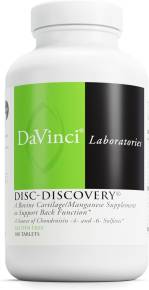The Ketogenic Diet’s Fatal Flaw

Have you gone “keto” yet? The ketogenic diet, a.k.a. “going keto,” is all the rage right now, with celebrities like Kourtney Kardashian endorsing it, calling it a “reset” or detox for the body. While it’s true that it resets the way your body uses nutrients, by burning fats instead of sugars, one question remains – why do people get so tired and “crash” after they’ve been on the diet for an extended period of time? It seems there is definitely at least one Keto con.
What is the keto diet’s fatal flaw? To understand this, first you need a good understanding of what the keto diet really does.
The Keto Diet Breakdown
In a nutshell, the keto diet is broken down into 75% fats, 20% proteins, and 5% carbohydrates. By eating macronutrients in these percentages, instead of burning carbs and sugars, you burn your body’s own fat stores. This is called ketosis, which your body recognizes as a type of fasting. Your fat cells are where you store toxins you are unable to process and your body dilutes those toxins with water to keep them from poisoning you.
Your liver is the source of the ketones being produced, and your kidneys pass them through to the urine, where you measure them as a sign of progress on the diet. The first weight you lose on a ketogenic diet is water weight, which causes the toxins in your fat cells to concentrate, often giving you symptoms that have been coined the “keto flu.” These symptoms range from digestive upset and skin rashes to headaches and body aches, similar to the symptoms you get from toxicities.
It isn’t long before your body is flushing out those fat cells and hopefully the toxins are flushing with them, rather than being redeposited into deeper tissues. At first, you feel good and the weight loss is a morale-booster. But after a while the fatigue sets in, often accompanied by anxiety, insomnia, and more. What’s causing these troubling symptoms?
Solving the Keto Puzzle
A friend came to me recently, remarking how much older a well-known doctor was looking after several months on the keto diet. “He has dark circles around his eyes but they’re white in the inside corners, his cheeks look sunken and he looks like he’s aged several years! What is it about going keto that does this, Dr. Ann Louise?”
Traditional Chinese Medicine (TCM) gave us the answers to this question thousands of years ago with their practice of face mapping. Those are signs of mineral imbalances, including copper, calcium, sodium, phosphorus, and more, just in that one loaded question.
Once mineral imbalances and deficiencies set in, it isn’t long before adrenal fatigue follows behind, and that’s when you start feeling tired from your carb restriction. A quick fix in the form of carb loading is often recommended, but it’s not the real answer. It isn’t the sugars and carbs your body is missing; it’s the mineral-rich, enzyme-loaded vegetables and fruits your body really wants, not to mention the essential fats present in seeds and nuts.
Mind Your Minerals
If you do a search for the ketogenic diet’s impact on adrenals, you will get hundreds of thousands of hits. But if you go to Medscape or PubMed and do the same search, you will come up with nothing. The reason for this is mainstream medicine does not recognize adrenal fatigue as a diagnosis. What it does recognize are mineral deficiencies, like sodium, for example, which causes fatigue, anxiety, and insomnia, among other symptoms. The solution for the sodium loss is good quality salt, like unrefined Celtic or Himalayan, but this doesn’t address the need for magnesium, calcium, and so many other minerals.
You see, while you’re losing that water weight and flushing those fat cells, the minerals you’ve accumulated are going along for the ride. At first, this can feel like a good thing if sodium retention has been causing you swelling. But, eventually the mineral loss is more than what your body needs and your sagging skin and TCM facial signs are showing you the mineral imbalances resulting from severe carbohydrate restriction.
Supplementing with minerals like salt and magnesium alone is not the answer—you need real food loaded with the proper balance of essential minerals. Continuing with the sodium example, once your body is excreting a lot of sodium, your body will send signals to conserve it. This causes potassium wasting, so now your potassium levels are dropping. Your muscles (especially the heart) and nerves need enough potassium to function properly. Too much or too little potassium can have life-threatening consequences.
As critical minerals are becoming imbalanced, stress hormones like cortisol and adrenaline are affected, and this leads to what we call adrenal fatigue. If you feel tired all the time and are experiencing anxiety and/or insomnia, I strongly suggest getting an HTMA (Hair Tissue Mineral Analysis) done through UNI KEY Health as soon as possible to measure your mineral levels. Using a small hair sample, the lab generates a detailed report of which minerals are too high or too low and gives recommendations to get them back in balance.
Face the Fats
Staples of the keto diet include foods like butter, cheese, cream, eggs, and meat – a lot of saturated fats. While saturated fats are not the villains they were portrayed as for so many years, they still need to be consumed in balance with other fats. Your body can make most of the types of fats it needs, but this isn’t the case with essential fats. Omega 3 and omega 6 fats have gotten the most attention for their numerous, positive health effects, but there are other essential fats as well, including omega 7 and omega 9.
All of these essential fats have one thing in common—they are present in ideal ratios in nuts, seeds, and their oils. These foods are lacking in the typical keto diet, or are out of balance with the abundance of saturated fats. If your saturated fats are coming from grass-fed animals, then your omega 3 fat consumption is better than most. But, you’ll still need to get your lesser-known essential fats like gamma linoleic acid (GLA), omega 7 and omega 9 from plant-based sources.
Ann Louise Gittleman, Ph.D., C.N.S.
Ann Louise Gittleman, PhD, is a New York Times award-winning author of 30 books on detox, health, and healing, including the international bestselling Fat Flush Plan and Zapped! Visit her blog and join her online Fat Flush Community.
Don't Miss a Thing!
Get the latest articles, recipes, and more, when you sign up for the tasteforlife.com newsletter.

